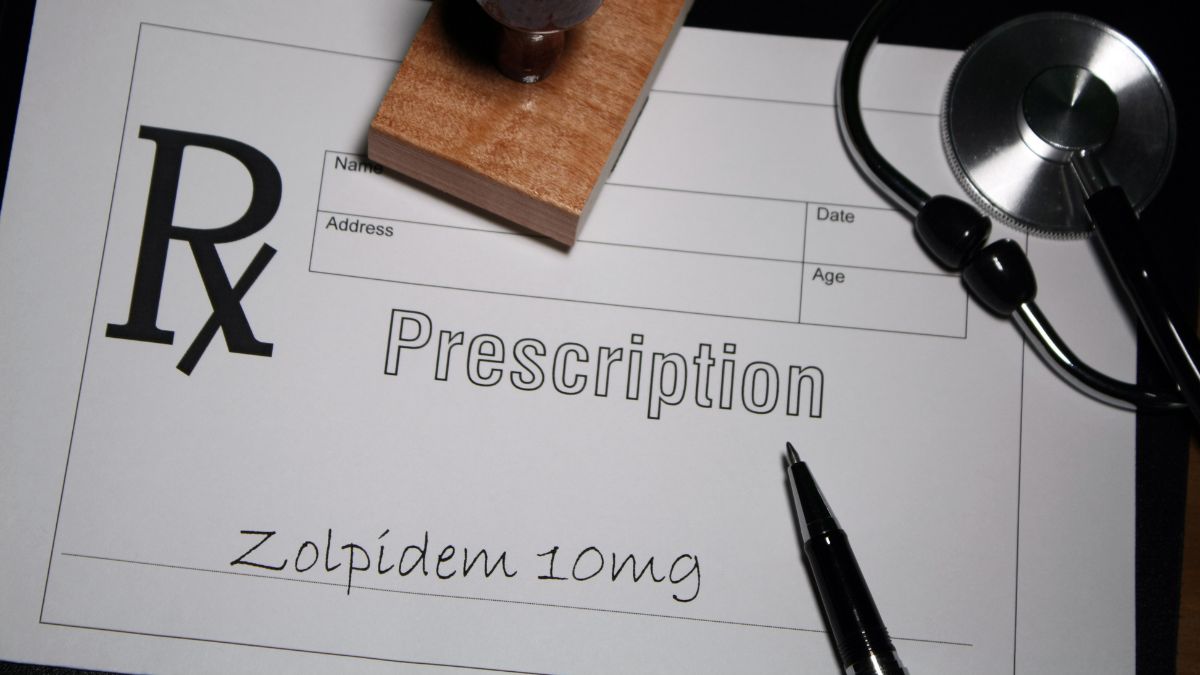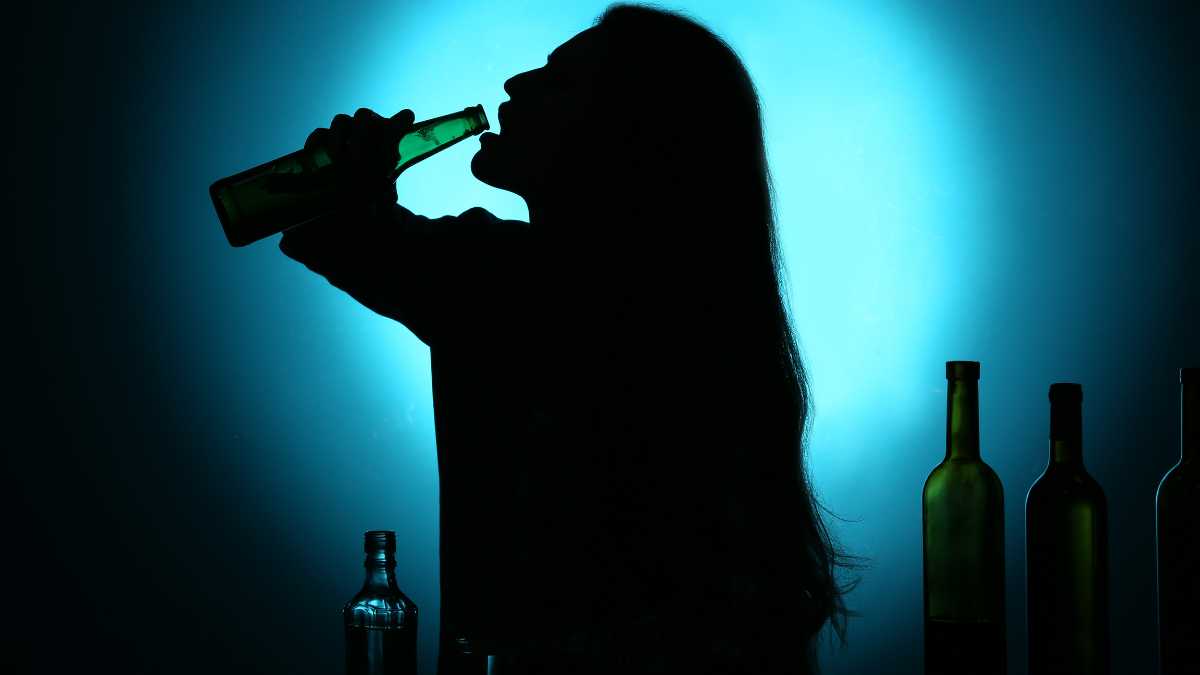It is common for people to turn to an alcoholic drink when they’re feeling upset, having social anxiety, or feeling stressed out. Alcohol can provide temporary relief in these situations. Alcohol can make people feel mirthful, funnier, and more confident. When people are celebrating New Year’s Eve, a birthday, or a wedding, alcoholic drinks are rarely in short supply. Given alcohol’s euphoric and uplifting effects, it may come as some surprise to learn that alcohol is technically considered a depressant.
What is a Depressant?
The reason why most people are confused about alcohol’s status as a depressant is that they mistakenly believe that a depressant makes people feel depressed. One may be tempted to look back on occasions when they were intoxicated and think, “Alcohol didn’t make me depressed — quite the opposite!” The truth is, the term “depressant” doesn’t necessarily refer to alcohol’s mood-changing effects at all, though alcohol abuse certainly can lead to depression in the long run!
A depressant is a class of drugs that depresses, or inhibits, the central nervous system (CNS). The central nervous system is composed mostly of the brain and spinal cord. It is responsible for receiving information, coordinating, and influencing the activity of every single part of the body. The activities that the central nervous system influences range from automatic life-sustaining activities like breathing to deliberate actions like throwing a football or driving a car. Drinking alcohol or using other depressant drugs causes the central nervous system to shut down to an extent. The result is a slowing down of brain functioning and neural activity.
The CNS-inhibiting effects of depressants are responsible for many of the perceived positive effects of alcohol. Many people feel more confident and uninhibited while drinking. This is because alcohol has reduced neural activity to such an extent that a person is likely to rely on their gut instincts rather than exercising critical thinking and reflection before they act. Alcohol’s short-term anxiety-reducing effects also stem from the fact that the central nervous system is depressed. By reducing the brain’s ability to be stimulated, alcohol causes sedation. When people drink alcohol in moderation, they tend to feel more at ease.
However, the depressant effects of alcohol also lead to a wide range of negative symptoms. It can result in slurred speech, an impaired coordination, lowered reaction speed, and inaccurate perceptions. After only a few drinks, people experienced a reduction in their cognitive abilities. They may become so uninhibited that they behave in ways they’ll come to regret. Their lack of judgment and critical thinking can put their lives and the lives of others in danger. When people drink high quantities of alcohol in a short period of time, an activity known as binge drinking, it is possible for their central nervous system to shut down entirely, a condition known as central nervous system depression. Alcohol overdose can therefore result in respiratory failure, coma, and even death.
It goes without saying that as humans, our central nervous systems are pretty essential! While drinking in moderation is okay for people who do not suffer from an alcohol use disorder, individuals who abuse alcohol can dangerously impair their central nervous systems. They thereby expose themselves to a wide range of risks, from dangerous behavior to life threatening alcohol overdoses.
Why Does Alcohol Feel Like a Stimulant?
It is important to understand that the effects of alcohol depend largely on how a person drinks. While alcohol is certainly a central nervous system depressant, it is capable of offering stimulating effects as well as sedating effects. The specific effects people experience while drinking alcohol depend on the quantities of alcohol a person drinks, how quickly they drink, and their individual body chemistry.
When people drink alcohol, the first effects they experience are generally stimulating. This is because small doses of alcohol have the effect of exciting people. This is why one or two beers can make people feel euphoric and more talkative. However, when people consume higher doses of alcohol, the depressant effects become more noticeable. These depressant effects increase as the quantity of alcohol increases. They include impaired sensory and motor function, slowed cognition, stupefaction, unconsciousness, and possible death.
A person’s style of drinking can determine which of alcohol’s two contradictory effects they’re more likely to experience. People who drink slowly are more likely to feel sedated and relaxed, because drinking slowly allows alcohol to be metabolized sufficiently for the depressant effects to manifest. Individuals who drink rapidly, however, increase their chances of experiencing stimulant effects. Some research indicates that many people initially drink alcohol because they enjoy the stimulating effects, such as confidence, increased sociability, and pleasure. However, once a person has become physically dependent on alcohol, they are likely to suffer from anxiety and overstimulation on a regular basis. As a result, individuals with alcohol use disorder are more likely to drink as a way to manage and lower their anxiety levels. People who suffer from alcohol addiction therefore more readily seek out alcohol’s sedating and depressing effects.
The way a person’s body responds to alcohol is also somewhat determined by biological factors like genetics. Research shows that some people are less responsive to alcohol’s sedative effects, and for this reason they are more likely than other people to develop an alcohol addiction. Because it takes higher quantities of alcohol to achieve sedation for these people, they are likely to drink more alcohol to compensate for their lack of sensitivity. For these people, drinking a few drinks might appear to have only a limited effect! However, the sad truth is that they are no less susceptible to alcohol’s negative effects than other people. While alcohol may feel like a stimulant for this population, alcohol’s CNS-depressant side effects are unavoidable. Depending on how much a person drinks, these effects can include irregular breathing, an inability to feel pain, toxic shock, cold and clammy skin, unconsciousness, and even death.
How Does Alcohol Depress the Central Nervous System?
Technically the word alcohol actually refers to a class of organic chemical compounds, many of which are undrinkable. Varieties of this chemical compound are used in rubbing alcohol, as a fuel additive, and as a thickening agent in skin creams. Ethanol, sometimes known as ethyl alcohol, is the type that most people are familiar with when they drink alcoholic drinks. Ethanol is the psychoactive component of beer, wine, distilled spirits.
When people drink an alcoholic drink, the effects generally begin relatively quickly. Ethanol enters the bloodstream, and when it reaches the brain it affects the central nervous system’s functioning in a number of ways. The precise mechanism of action is not fully understood by researchers. However, scientists have begun to understand that many of alcohol’s depressant effects occur because of the way alcohol influences receptors for gamma-aminobutyric acid (GABA) in the brain. GABA is a neurotransmitter that causes the brain to feel calmness, sedation, as well as the more life-threatening effects of central nervous system depression. Alcohol also prevents the proper functioning of glutamate, another neurotransmitter that plays a role in memory formation and many other aspects of the brain.
The reason alcohol feels so pleasurable to drink, and one of the reasons it often has stimulant-like effects, is that drinking alcohol increases the production of dopamine in the brain. Dopamine is an important neurotransmitter that is sometimes referred to as the brain’s “reward chemical.” Dopamine is naturally released in the brain when they score a 3-pointer in basketball, when they have sex, when they accomplish a goal, and other healthy activities. When dopamine is released, it tells the brain that the activity is worth doing again. Drinking alcohol releases enormous quantities of dopamine. This is responsible for the feelings of pleasure and euphoria that occur, but it is responsible for the physical addiction that occurs when people abuse alcohol. Over time, once dopamine hijacks the brain’s motivation and decision-making centers, people lose their ability to say no to a drink.
When people drink in high quantities, as they do when they suffer from an alcohol use disorder, they are more likely to experience the depressant effects of alcohol.
Call Design for Recovery to Begin Your Healing Journey!
Reach out to our team to discuss sober living options and next steps toward a healthier routine.
Side Effects of Depressants
Most recreational drugs can be classified as either central nervous system stimulants or central nervous system depressants. Stimulants include drugs like cocaine, crack, methamphetamine, and amphetamine. These drugs have the opposite effect of alcohol and provide a high by increasing the activity of the central nervous system. Because they increase activity, they are sometimes known as “uppers.” Depressants, by contrast, are often referred to as “downers.” Many depressants, like many stimulants, have recognized medical uses. As such, a wide assortment of prescription drugs fall under the category of CNS depressants. These medications can be used to treat anxiety disorder, panic attacks, and insomnia. They generally fall into one of three categories: benzodiazepines, non-benzodiazepine sedative hypnotics, and barbiturates. Some common depressant medications include:
- Valium
- Ambien
- Mebaral
- Xanax
- Ativan
- Lunesta
- Halcion
- Librium
- Sonata
- Prosom
- Klonopin
When people drink alcohol in moderation or take these medications as prescribed, they are at a lower risk of experiencing dangerous side effects. Individuals taking depressant medications may initially feel somewhat sleepier and less coordinated during the first few days, but these symptoms generally subside over time. When people drink high quantities of alcohol or abuse depressant medications, however, they are more likely to experience dangerous and unpredictable side effects. Some common signs and symptoms of central nervous system depression include:
- Poor concentration
- Slurred speech
- Headache
- Depression
- Confusion
- Light-headedness
- Fatigue
- Dizziness
- Problems with memory
- Impaired motor skills
- Nausea and vomiting
- Dry mouth
- Lowered blood pressure
- Slowed breathing
- Seizures
- Unconsciousness
- Death
People who abuse depressants often experience a wide range of effects in their lifestyles as well. Many of these long-term effects of depressant drugs occur due to the addictive nature of these drugs. When individuals prioritize substance abuse over other activities, they often neglect other important areas of their lives. In many cases, it goes beyond neglect. Individuals suffering from addiction to depressants like alcohol are frequently actively destructive. As a result, people abusing depressant medications or alcohol often suffer from problems with their employment, academics, friends, family, finances, and even legal standing. Not only does substance abuse often lead directly to health problems, but addiction often makes people unlikely to seek treatment, and as a result these conditions tend to worsen over time. Addiction can also put other people at risk, causing physical harm to friends, family, and other loved ones. It is essential for anyone suffering from addiction to a depressant to get help as soon as possible.
Dangers of Abusing Alcohol
According to the National Institute on Alcohol Abuse and Alcoholism, approximately 6% of adults in the United States suffer from an alcohol use disorder (AUD). However, the problem isn’t just limited to adults. Almost 2% of young people between the ages of 12 and 18 suffer from an alcohol use disorder as well. Alcohol use disorder is a condition where an individual repeatedly experiences negative consequences from their drinking but remains powerless to control it. People suffering from alcohol use disorder may recognize the devastating consequences of their substance abuse, and they may try to control, manage, or stop their drinking entirely. However, the nature of addiction makes this impossible. The only way to exit the vicious cycle of alcohol abuse is to seek outside help.
Unfortunately, only a very small percentage of people suffering from alcohol use disorder ever actually seek help. Only 7.9% of people with alcohol use disorders seek help. The remaining 92.1% of sufferers either continue to try to manage their disorders on their own — or they refuse to admit that they have a problem at all. In either case, the result is usually the same. Alcohol use disorder is a progressive illness that tends to get worse over time, never better. The consequences of regular alcohol abuse can destroy a person’s life as well as the lives of their loved ones.
Alcohol’s Effects on the Body
Alcohol is essentially a poison that shuts down the body’s essential functions. As a central nervous system depressant, it inhibits the functioning of most of the body’s vital processes. In order to process this toxin, the body must do a lot of work. When people drink to excess regularly, the body loses its ability to process and metabolize alcohol and organ damage can occur. Alcohol’s effects on the body over the long term include:
- Heart damage. Over time, people can develop a range of issues, including high blood pressure, strokes, irregular heart beats, and a gradual stretching and drooping of the heart muscle itself, known as cardiomyopathy.
- Liver problems. The liver is responsible for processing toxic substances like alcohol. Over time, it can become overwhelmed and damaged by regular alcohol consumption. The results included fibrosis, cirrhosis, alcoholic hepatitis, and steatosis, otherwise known as fatty liver. Liver failure can be fatal.
- Pancreatitis. When a person abuses alcohol over a considerable period of time, their pancreas can begin to produce toxic substances. When this occurs, they can develop pancreatitis. Pancreatitis involves inflammation and a dangerous swelling of the blood vessels that impairs proper digestion.
- Cancer. A large body of research demonstrates a strong link between alcohol consumption and many types of cancer. Alcohol is a known carcinogen. The more a person drinks, the higher their likelihood of developing cancer is. Approximately 3.5% of cancer deaths are attributable to cancer. Alcohol has been clearly linked to head and neck cancer, liver cancer, esophageal cancer, colorectal cancer, and breast cancer, though researchers suspect it plays a large role in many others.
- Impaired immune system. Chronic drinkers have a higher likelihood of developing a wide range of infection and diseases, including tuberculosis and pneumonia. Even after one bout of drinking, the body’s ability to fight off infections is impaired for approximately the next 24 hours.
Alcohol’s Effects on a Person’s Life
Alcohol significantly changes people’s behaviors and personalities. This is in part due to its CNS-depressant effects. When alcohol limits neural activity, it also removes inhibitions, critical thinking, and a person’s ability to make clear headed judgments. In small quantities, alcohol can make people feel more sociable, funny, or confident. However, when people consume alcohol in higher quantities these personality changes can become both disturbing and dangerous. They can become violent, antagonistic, and make decisions that harm their careers, relationships, and legal standing. Their poor decision-making can, in the event of a drunk driving accident, result in considerable loss of life.
People also tend to engage in lifestyle changes when they become physically dependent or addicted to alcohol. Individuals with alcohol use disorders tend to prioritize alcohol consumption over all other activities. As a result, it is common for people to stop engaging hobbies or healthy activities, stop working toward career or academic goals, and withdraw from their habitual social groups. Sadly, alcoholism’s tendency to reduce a person’s access to resources and social support also makes a person more likely to drink.
Over time, people who engage in alcohol abuse are likely to find their lives become very small. They may suffer some of the following consequences:
- Failure to advance at work or academically
- Unemployment
- Poverty
- Homelessness
- Social isolation
- Legal or criminal consequences
- Debt
- Mental and physical health problems that go untreated
- Divorce
- Loss of child custody
- Alcohol overdose.
Contact Design for Recovery Today!
Fill out our quick form to connect with a peer mentor and learn how our sober living community supports accountability, structure, and personal growth in recovery.
Alcohol Overdose
As a central nervous system depressant, alcohol is capable of shutting down the CNS in a life-threatening way. Alcohol overdoses happen when the quantity of alcohol in the bloodstream is so high that the brain is no longer able to control automatic life-supporting functions. These include breathing, the heart beat, and temperature control. This phenomenon, sometimes known as alcohol poisoning, is responsible for a number of symptoms, including unconsciousness, vomiting, seizures, slow heart rate, clammy skin, mental confusion, trouble breathing, dulled responses, and extremely low body temperature. Because alcohol overdose can prevent organs from receiving the oxygenated blood they need, it can lead to permanent organ damage, including brain damage. It can also be fatal.
Alcohol Abuse Among Young Adults
Most people are aware that alcohol can be dangerous and that alcohol use disorder can destroy lives. Nonetheless, it can be difficult to know when you or a loved one is in need of help. This is partly because the image of the alcoholic that most people have is derived from television and movies. The media generally depicts alcoholics as vagabonds drinking out of a brown paper bag raving madly on the street. The fact is, alcoholics come in many varieties. Having a two-car garage or going to grad school doesn’t mean that someone isn’t suffering from an alcohol addiction.
Unfortunately, it is all too common for people to dismiss alcohol abuse when it is committed by young people. When highschool students or college students drink in excess, this behavior is frequently dismissed. Colleges throughout the United States are known for the drinking and party cultures. Our culture tends to see alcohol abuse as almost a rite of passage. Even when a college student’s drinking becomes noticeably problematic, even parents often simply shake their heads and think, “My child will get over it by the time they graduate.” The truth is, people suffering from alcohol use disorder do not merely get over it without outside help.
Another misconception is that people can be “too young” to have a problem with alcohol. The reality is that young people actually engage in the most dangerous form of alcohol consumption: binge drinking.
What Is Binge Drinking?
Binge drinking is an approach to alcohol consumption that involves consuming a high quantity of alcoholic drinks in a short period of time. The central nervous system inhibiting effects of alcohol become stronger when people engage in binge drinking. The body is not able to process alcohol quickly, and when people drink a lot in a short period their bodies will not be able to keep up, and they will become intoxicated much faster. As a result, individuals who binge drink are far more likely to experience the most severe consequences of alcohol abuse.
Not everyone who binge drinks has an alcohol use disorder. However, binge drinking is the most dangerous form of alcohol abuse. It is also the most common form of alcohol abuse among young people. More than 90% of the alcohol that young people drink is consumed via binge drinking.
Young people who engage in binge drinking are more likely to suffer poor academic performance, social isolation, and other life difficulties. Binge drinking also increases the chances for blackouts. Individuals who binge drink have a higher chance of being involves in a sexual assault. Their impaired judgment can lead to severe injuries as well. Approximately 188,000 people under the age of 21 go to the emergency room each year to due injuries sustained while binge drinking. Sometimes the consequences are more permanent: 4,358 people under the age of 21 die each year while binge drinking. The most common reasons, in order of frequency, are automobile accidents, homicides, falls, burns, drowning, and suicide.
Mixing Depressants with Other Drugs
Young people attending college or engaging in a party lifestyle are likely to abuse multiple substances, not just alcohol. When an individual abuses multiple substances simultaneously, this is referred to as polysubstance abuse. In fact, individuals with addiction often suffer from polysubstance dependence, meaning there is not one single “drug of choice” to which they have a physical dependence, but rather multiple drugs. People engage in polysubstance abuse for many reasons, from wanting to strengthen the positive effects of a substance to mitigating the negative effects. Unfortunately, polysubstance abuse comes with its own set of dangers.
As a depressant, alcohol works to shut down the body’s primary functions. When alcohol is combined with a stimulant, such as cocaine or methamphetamine, the stimulant has the opposite effect: it sends the body into overdrive, taxing the heart and respiratory system. However, when alcohol is inhibiting the central nervous system, it is more difficult for the body to meet the demands imposed upon it by the stimulant. This dramatically increases the likelihood of overdose. Combining alcohol with other depressants, like opioids and benzodiazepines, also increases the chances of a life threatening overdose, since the substances work synergistically together to shut down the CNS.
Getting Help for Alcohol Addiction
Alcohol consumption plays such a ubiquitous role in so many aspects of our culture, it can sometimes be difficult for people to tell what counts as normal and what counts as abuse. However, despite alcohol’s prevalence, it is important to understand that alcohol is a highly addictive and dangerous drug. As a depressant, it is capable of shutting down a person’s central nervous system to such an extent that life-sustaining functions cease. If you or a loved one has tried and failed to control their drinking despite repeatedly experiencing negative consequences, there is a good likelihood that an alcohol problem exists. It is crucial to seek help as soon as possible.
Design for Recovery, a structured sober living in West Los Angeles, is the ideal place for young men to rebuild their lives. Alcohol addiction can feel deeply isolating and lonely. For many, simply coming into contact with other young men who suffer from the same disorder can be healing in and of itself. Our staff work with residents to ensure that they develop the skills and coping tools they need to stay sober over the long term. Moreover, as a structured sober living home, we help young men recovering from addictions develop important life skills and values. At Design for Recovery, we believe that recovery only begins with physical abstinence, and that long term sobriety involves working to build a new life. For our residents, this means healing relationships, working on career goals, learning self-care, and developing new connections. By the time our residents graduate, not only are they sober, but they’re living lives that they wouldn’t even have dreamed of a year before.
If you’re ready to make a change, reach out to Design for Recovery today.
- What is a Depressant?
- Why Does Alcohol Feel Like a Stimulant?
- How Does Alcohol Depress the Central Nervous System?
- Side Effects of Depressants
- Dangers of Abusing Alcohol
- Alcohol’s Effects on the Body
- Alcohol’s Effects on a Person’s Life
- Alcohol Overdose
- Alcohol Abuse Among Young Adults
- What Is Binge Drinking?
- Mixing Depressants with Other Drugs
- Getting Help for Alcohol Addiction







Written By
David Beasley